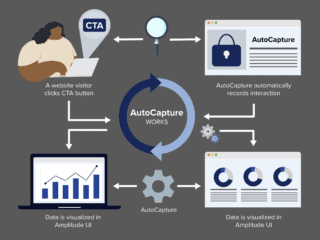Channel groupings in Google Analytics are crucial for businesses because they allow analysts to categorize incoming traffic into meaningful groups, like search, display, and more. These groupings help businesses gain insights into the effectiveness of their marketing efforts, understand user behavior, and make informed decisions to optimize their marketing strategies.
GA4’s channel groupings are based on “rules” that utilize multiple dimensions (such as source, and medium). And while there’s set of default channel grouping that all GA4 users can use, GA4 also offers the flexibility to create Custom Channel Groupings, as well as to set a “Primary” Channel Grouping. Given that there are three sets of channel groupings, this post will compare and contrast the three options, and help you understand how to make the most of them.
Comparing GA4 Channel Grouping Types
Again, there are three types of channel groupings: Default, Custom, and Primary. The Default Channel Grouping is a rule-based grouping of marketing channels which are pre-defined by GA4. This default channel group cannot be edited, and will function the same way for any GA4 user.
Custom Channel Grouping (CCG), as the name implies, is a rule-based grouping of channels that users are allowed to edit. For example, users can create rules to customize the default channels that work “out of the box,” and even to create entirely new channels. CCGs help businesses to organize and categorize their channels to align with their unique, in-house definitions. As a result, CCGs are commonly used to make GA4 data, reporting, and insights more relevant and actionable. If you haven’t created CCGs yet, don’t worry — these custom groups can be applied retroactively. To learn more about CCGs specifically, check out our deep dive into this specific feature.
Lastly, the Primary Channel Grouping is, by default, a copy of the Default Channel Grouping. This might sound redundant, but what’s useful about this is that GA4 allows users to take any Custom Channel Grouping and set it as their Primary Channel Group (as long as you have Admin access). In other words, once you’ve created a CCG, you can actually make it the channel grouping that users see by default, in essence “overriding” the true Default Channel Grouping. It’s important to note that there can be only one Primary Channel grouping per GA4 property.
Understanding “Scopes” for Channel Groupings
Now that we understand the three types of channel groupings, let’s dive a bit deeper into how they work. Google Analytics organizes data into user-level, session-level, and event-level “scopes.” You’ll see these scopes reflected in the names of certain dimensions in GA4. There are three scopes for Channel Groupings: First User, Session, and Event. Let’s review each of these.
User-scoped Dimensions: show how users first arrived at your site/app. These dimensions always include the prefix “First user,” as in the First User Channel Grouping dimension (which shows the most common channels for new users). The value assigned to each user-scoped dimension remains the same as users return to website or app.
Session-scoped Dimensions: show how users arrived at your site/app when they initiated new sessions. Session-scoped dimensions show you where both new and returning users are coming from when they start new sessions. These dimensions always include the prefix “Session,” as in the Session Channel Grouping dimension. New values are assigned to session-scoped dimensions each time users return to the website or app.Event-scoped Dimensions: help attribute credit for a conversion event that a user triggered. Event-scoped dimensions aren’t reflected via a prefix in a dimension. GA4 surfaces information about event-scoped dimensions in the Model Comparison and Conversion Paths reports.
Event-scoped Dimensions: help attribute credit for a conversion event that a user triggered. Event-scoped dimensions aren’t reflected via a prefix in a dimension. GA4 surfaces information about event-scoped dimensions in the Model Comparison and Conversion Paths reports.
Differences Between “First User” Dimensions and “Session” Dimensions
The main difference between the User Acquisition (First User Channel Grouping) and Traffic Acquisition (Session Default Channel Grouping) reports is that they attribute conversions to different parts of a user journey. As the name suggests, the First User Default Channel Grouping focuses on the first channel that led a visitor to the website. For example, if a user initially discovers the website through Organic Search and later returns via Paid Search, the First User Channel Grouping would be “Organic Search.”
By contract, the Session Default Channel Grouping is based on the traffic source for each individual session. It assigns the session to a specific channel group based on the source of traffic for that session. For example, if a user arrives at the website through an organic search and then later in the same session clicks on a paid search ad, the session default channel group for that session would be Paid Search.
Another significant aspect in relation to the First User Default Channel Group and Session Default Channel Group is that both these user-scoped and session-scoped dimensions follow the “Paid and Organic Last Click” model by default, regardless of what attribution model is selected as the “Reporting Attribution” model.
Navigating to the Channel Grouping Reports in GA4
First User Default Channel Grouping can be found in the User Acquisition report, and Session Default Channel Grouping can be found in the Traffic Acquisition report — both of which are found in the Acquisition reports in GA4. Additionally, Explore reports provide a further option to report on all types of Channel Groupings.
Knowing When to Use Each Channel Grouping
Channel groupings offer us flexible ways to categorize and analyze data on marketing channels, which is great. But as you’ve seen, there’s some complexity to fully understanding them. Let’s review the differences to help you understand when you might use the different types of channel groupings.
In general, the First User Default Channel Grouping should be used when trying to analyze which channel groupings are driving people to your website for the first time, as each identified user will be shown once in this report only. This can also help with long-term analysis of which channels, for example, help you acquire users who end up being valuable over the long run.
Conversely, Session Default Channel Grouping should be used when your goal is to analyze which channel groupings have contributed to sessions on the website, regardless of how a given user arrived on the site for the very first time. This will help you understand how channels are contributing to conversions in a more immediate sense, without crediting channels that initially brought the user to the site in the first place.
As you start to compare your results when using different types of channel groupings, you’ll notice that your data can look different depending on which grouping you’re using. Now that you understand how the various channel grouping options work, you’re well on your way to using GA4 for more robust analysis of marketing channel performance.

















